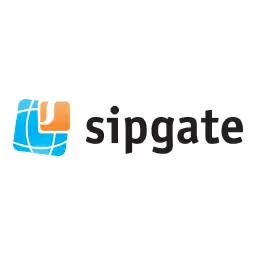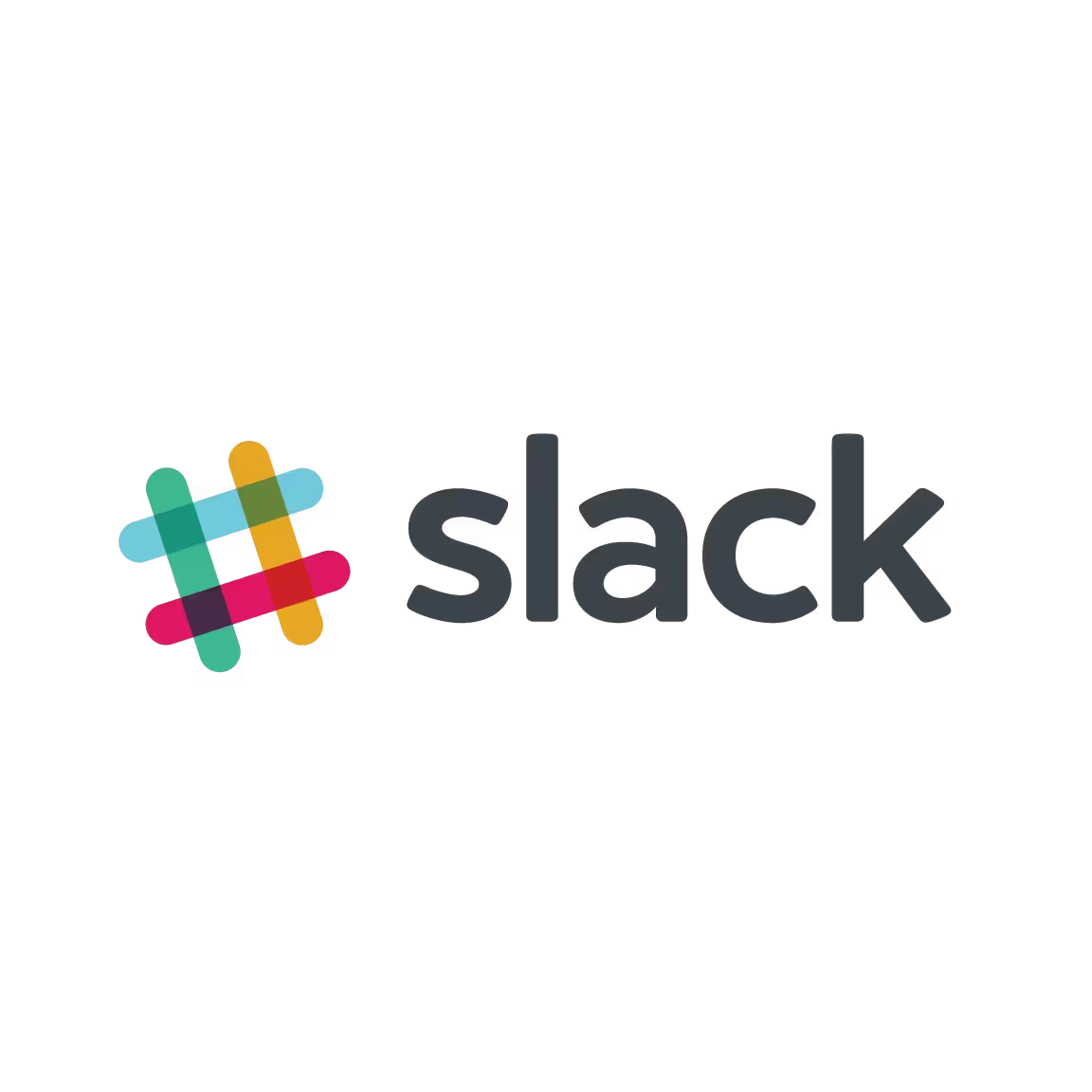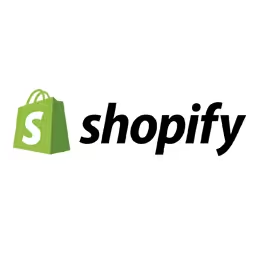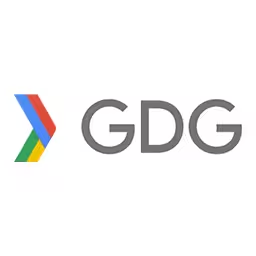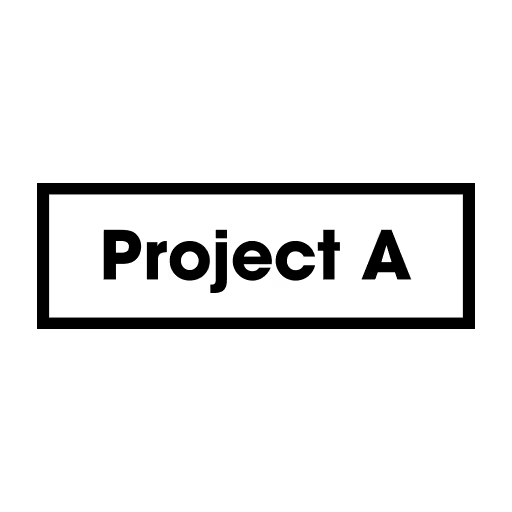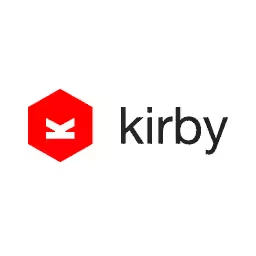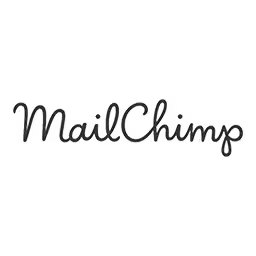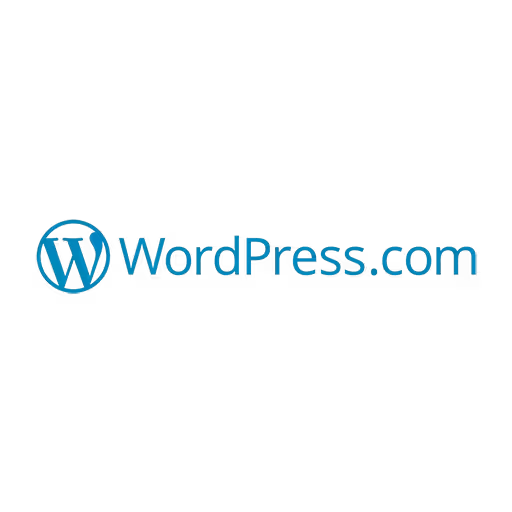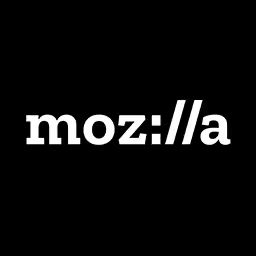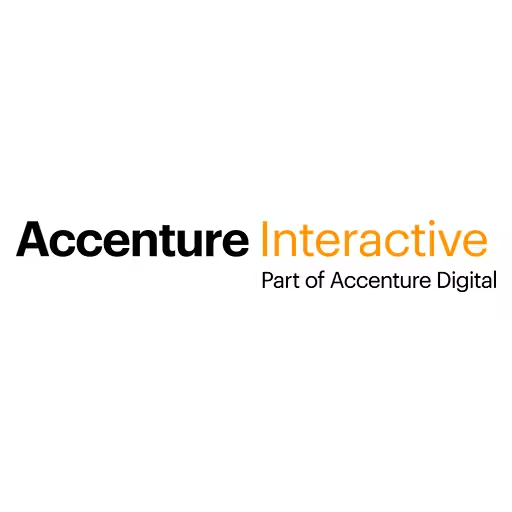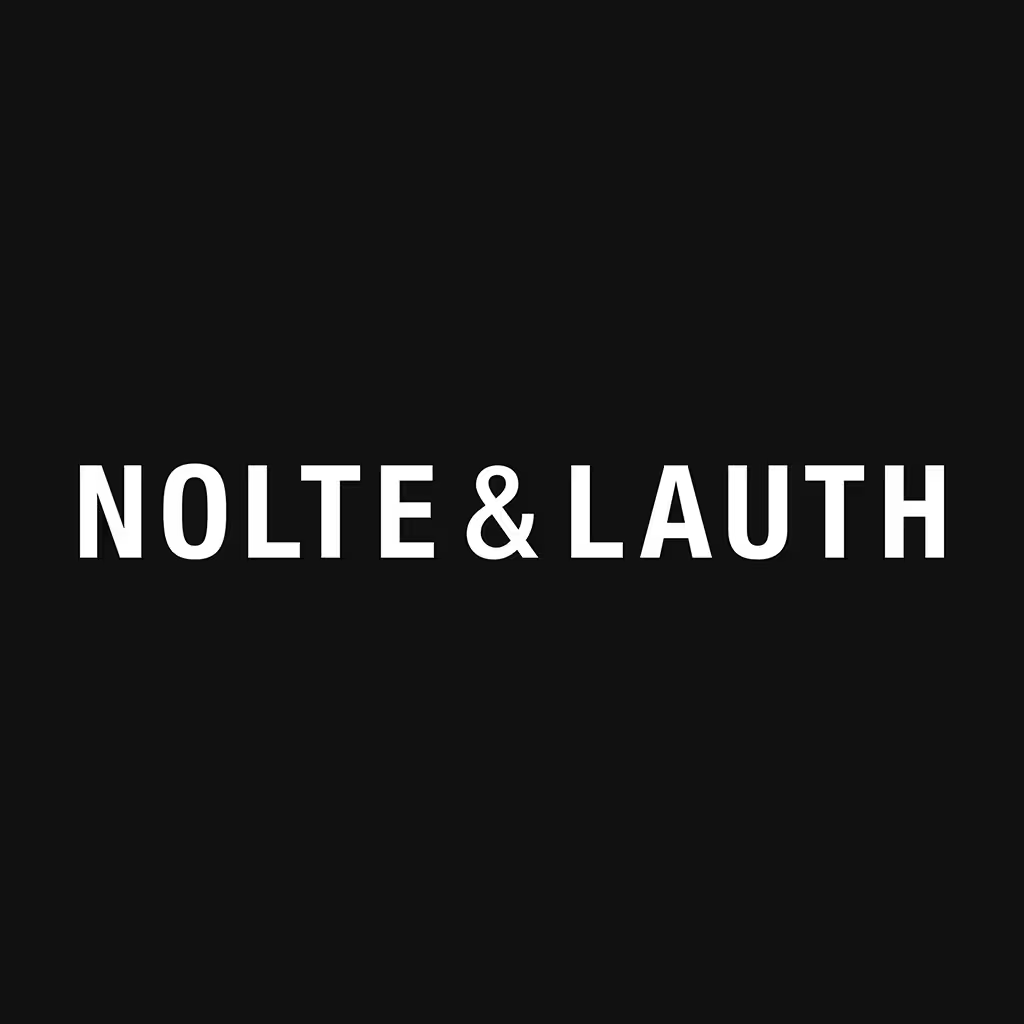Elliot Jay Stocks
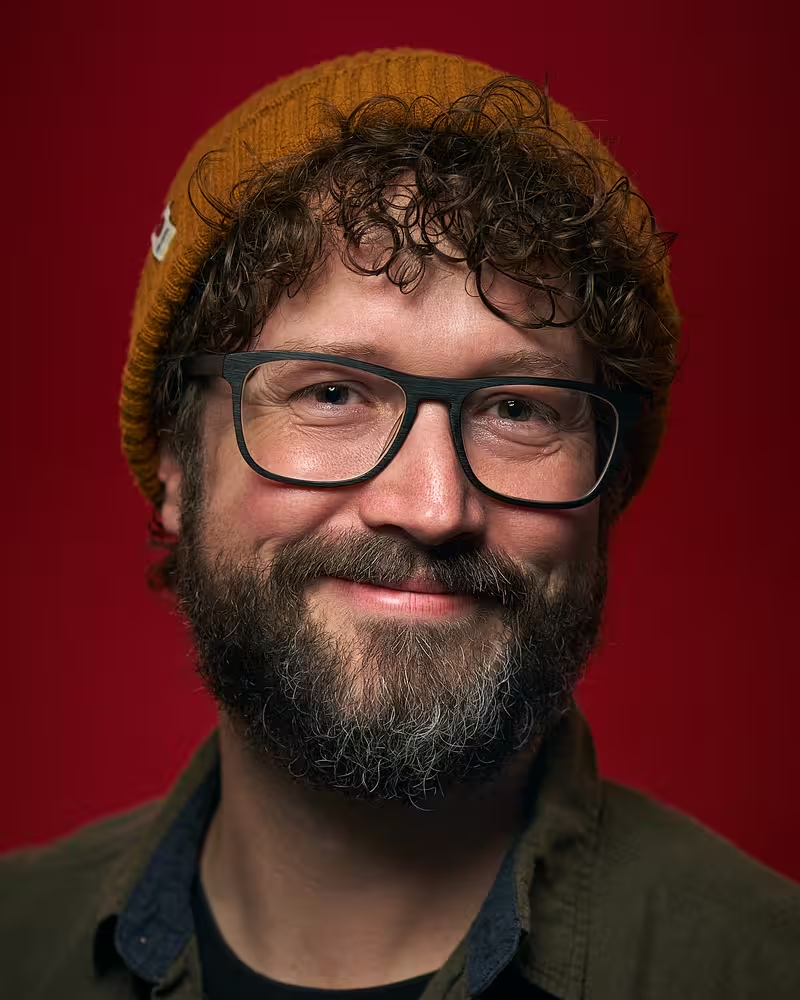
Elliot Jay Stocks is the Co-editor and Creative Director of the bi-annual lifestyle magazine Lagom. Until the end of 2015 he was the Creative Director of Adobe Typekit, and prior to that he founded and ran the typography magazine 8 Faces, which has now been turned into a hardcover book after a successful Kickstarter campaign. His design work, for clients such as Colonna, Virgin, Microsoft, Brooklyn Beta, and MailChimp, has been showcased in publications such as Communication Arts, Creative Review, Computer Arts, Page, The Independent, .Net, and Design Week. He lives and works in the countryside near Bristol, England, and creates electronic music by night under the alias ‘Other Form’.
Talk: Now is Always the Wrong Time
Side projects have always been a big part of Elliot's career in design, publishing, and music – some successful, others not — and in latter years the line between ‘side’ and ‘full-time’ has become increasingly blurred, as has the line between client work and making products. In this talk, Elliot reflects on the pros and cons of his various projects, and the concept of productivity and creativity as a whole. He proposes that because creativity always seems to manifest itself at the ‘wrong’ time, now has actually never been a better time to follow our passions and make a living from what we love the most.
Be sure to also check Elliot’s full-day workshop
Transcription
Audience: [Applause]
Elliot Jay Stocks: Hello. Hey, everyone. Thanks for coming on. Thank you, Marc. That was a really lovely intro - really lovely.
Usually, before going on stage, I feel a little bit nervous about how things are going to go. Personally, I actually feel quite nervous about how it’s going to go when I finish because I’ve got my beard taped up to a microphone. So, when I come offstage, I’m a bit worried about who is going to yank it off.
Audience: [Laughter]
Elliot: John is going to do it.
Audience: [Laughter]
John: Yeah!
Audience: [Laughter]
Elliot: One less bearded hipster, eh? [Laughter]
Part one -- it’s a three-part story. Sorry. What’s going on here? There we go. I’ve messed mine up.... Never mind.
Sometimes I find myself thinking I shouldn’t be doing this. Now, we’ve all been prone to a little bit of procrastination, right? My friend Jessica Hische has this saying called procrastiworking, this idea of actually making side projects when you probably should be doing your actual work. I think I’ve slipped into doing that somewhat.
Sometimes I’m sitting there at my desk, and I’m thinking, “Man, I have some client work to do and the deadline is on Wednesday. I really need to do some work on the partnership stuff for the magazine so the next issue can come out on time. I really need to do some work on my much overrunning 8 Faces book. I was going to do this beer label for my friend’s brewery that he’s starting to set up. Then I promised my daughter I’d make this little wooden cover for her sandpit before winter came.” There are all these things, and you know I really shouldn’t be doing this.
[Loud techno music]
Elliot: What do I mean by “this”? What is the “this”? Well, for me it’s the perhaps ill-advised decision to embark on a career as a musician. The video there was directed by a friend of mine, so the “this” is not the video. It’s me making music. It’s me tinkering about in my studio, a studio that we have out in the garden back home.
For a number of years now, I’ve always juggled multiple projects, multiple disciplines, [and] multiple media. I found that I have a very, very short attention span, and I get really bored with long projects, and I get very tired if I’m working on one thing at any one time. I’ve always liked to do lots of different things. It’s very liberating. At the same time, it’s actually kind of stressful because I’m jumping between all these different roles all the time.
I do; I like the variety. I am, I guess you could say, a designer mainly, but also sort of trying to do music now, be a musician, and have the magazine, so I’m editor and publisher. Then there are all kinds of logistics things around that. I’ve done bits of print design, Web design, illustration, and stuff. I like to do a bit of everything. I think the only consistent role you could say that I’ve always ended up doing is email. Unfortunately, I am a professional emailer, it seems. But, I would like that to change very much.
Why then would I add to the stress? Why would I add another role into the mix? Why would I choose to do something that I should probably really be doing in my free time? Why would I eat away at the little free time that I do have that does exist? Why now? Why is it the idea that I should be doing something now? Why am I suddenly going, “Should I be doing this?”
Well, I found myself at the end of, well, yeah, I guess about the end of last year. I had been making some music, and I had befriended some folks in the industry in the kind of underground techno industry. They’d given me some very favorable words about the music, I was really chuffed, and it was at the point where it was almost finished. This music was getting there, and it was getting to the point where I thought that maybe other people might enjoy it. I’d been making music for a long time, and it was the first time in my life that I felt that it could be at the stage where it wasn’t totally embarrassing, although you may disagree, of course.
Let me just take you back a few years to give you a little bit of context about my relationship with music making. If you know me or if you’ve seen me talk before, you’ll know that I talk very much about design most of the time, and typography, especially. Many moons ago, when I was a student, or just after I finished school and before I went to university, I took some time out, and I work at a Virgin megastore when they still existed. That’s me over on the left there. That’s what I looked like underneath this.
Yeah, before I went to university, we worked there. Sorry. When I say “we,” it was me and some friends pictured here. We all just worked. We were just shop assistants. There were loads of musicians there. We all happen to play in bands, make music, or whatever.
We convinced our managers at the time that, if we could make a CD ourselves, would they let us sell it on the shop floor? They said that we could, which was really amazing. I think we technically outsold Prince the week of its release, I mean only in that store. But, hey, there you go.
You can see here there’s some point of sale stuff that’s got the CDs on it. It was called 434 Records because that was our store name in the chain of Virgin megastores. Anyway, we sold some stuff, and I was responsible for designing the cover of the CD itself, the point of sale, and the website. That was the really crucial thing. I was building this website with this thing called Homestead.
Has anyone ever used or remember Homestead? Yeah? Oh, wow. Okay, I’m not the only old one here. This is cool.
Right, so really horrible, messy sort of WYSIWYG website builder from way back in the day, but it got the job done. In doing so, building this website for our sort of record label really just kickstarted my interest in the Web. That became a really pivotal point for me.
Then it was around that time as well there were loads of Flash things going on. There were these really Flash sites being built by folks like Hi-Rez and Juxt Interactive. It was all grungy and stuff like that, so I mimicked all of that style, and I started building websites for myself for my fledgling and very embarrassing music projects complete with pixel fonts and all of that stuff. Everything moved, and it was all very silly. Every now and again I would release, self-release, CDs of really terrible, out of tune vocals over dodgy, like, industrial rock that I’d rather not dwell on.
Fast forward to around about 2013. I started getting some analog synth systems, cheap analog synths, and playing around with stuff. I really liked the tactile nature of hardware in the same way that vinyl is really, really popular at the moment because it’s that antidote to Spotify. It’s like if you have all of the music available to you, then actually having that very tactile experience with music, you know, getting some vinyl and actually experiencing the music and looking at the artwork and stuff. I feel that that is an antidote to the fact that we are so digitally connected to music, and to everything, in the same way that indy publishing is hugely popular at the moment despite the fact that we live in an age where digital publishing has never been more of a thing. I think it’s people wanting to get that tactile nature, getting back in touch with stuff. It was very similar for me with synths and playing around, fiddling with knobs, and doing all that, very similar to all the cool stuff that Toby is doing.
By the end of 2016, I’d started to make some music with this gear. It was fairly well. But, as I said, the trouble was the music wasn’t complete. It was nearly complete.
I was thinking, “Well, you know what? It’s always at this stage where it’s nearly complete. It’s nearly done. I’m working on this stuff. It’s never quite finished.”
I was chipping away at it evenings and weekends. I don’t know what happened exactly, but I just got to a point where I thought, “This is just never going to happen unless I do something different in some way.” What happened was I decided that for a period--I think it was a month or a month and a bit--I would spend every Wednesday and Thursday working just on music. Instead of doing work that day, whatever that was, that I would do music instead. I would treat it exactly as if it was a work project. I needed to get it in on time and do all this stuff. But, it would be music making, and music making would actually happen in the day.
Now, I was aware, before I did so, of the financial implications. Obviously, there’s no way that this is going to be as financially beneficial as doing client work and stuff like that. But, I realized it was the only way that it was going to get done, rather than just doing evenings and weekends and whatnot. Also, we have a toddler who, at the time, she was younger, and evenings and weekends weren’t as much of a free time anyway.
I made another decision, and that was, if I’m going to release this music, then I should just actually get it out there properly and start an actual record label to do it. I got some advice from some friends. Rather than sort of pursuing record deals and stuff like that, I effectively sort of turned out company into also being a record label as well.
The other really key thing was that I didn’t want to just put it out with a digital-only release, put stuff on Spotify, and everything like that because I knew that it would just disappear into the ether. Nothing against anyone who releases digitally, but there are a lot of people who do that. I wanted to make something real, something physical that I could hold, much in the same way that I do with the magazines. It was really just for me, just to feel that I had done something, to signify to me that I was more serious about this music-making thing than I ever had been before.
I should state at this point that I really had absolutely no idea what I was doing. But, I feel like all good things come from a healthy degree of naivety. The other things that I’ve dabbled with and enjoyed in the past, and have ended up being a success, to a degree, have all sort of come from a very healthy degree of naivety.
I gradually learned about the process of creating a vinyl record: the mastering; the manufacturer; the distribution; the promotion, to an extent. It’s a pretty fascinating process, actually. I don’t know if anyone is familiar with how records are actually made. All records are mastered. I went to the mastering studio and sat in on the session. But, when you’re actually mastering to vinyl, as well there’s the actual lacquer is actually cut. It’s a really incredible experience.
Here’s some quick video I shot of just the stuff from the mastering engineer’s desk.
[Loud audio feedback]
Elliot: When you play a vinyl record, the needle sits in the grooves, and the music comes out.... When you’re making a vinyl record, the opposite is true. The sound then goes into the grooves. It’s way more complicated than what I’m saying, but it goes into the needle, and the needle then actually physically cuts a groove in the lacquer. There are loads of really interesting stuff about this, like the fact that a louder sound physically takes up more space on the disk. If you have a louder or a basier track, you even have to consider whether that track might actually fit on one side, of you might need to change the running order so that one track has to go on the other side, which is actually exactly what happened to us because of the pure baseness of the frequencies.
It was really interesting. It was an extremely, almost magical experience hearing your music that you sort of sat alone doing and hoping that somehow it might turn into something, physically turning into something, physically cutting a groove into some lacquer that would then go off to a factory to then be made eventually into vinyl records. When it was made, it was printed, it was sent out and distributed, and stuff like that, it was then a really fulfilling experience for me to see it in record shops, in real record shops. This is in Hard Wax right here in Berlin, sort of the mother ship of underground techno, so it was a real honor to see it in there. I don’t think I’ve ever sold any copies, but it’s in there, and that’s what matters.
Audience: [Laughter]
Elliot: This is on Boomkat, which is like an online site I really respect for underground music. I managed to get a digital-only release--that I put out the week before just to tease it--featured on Beatport, and a little thing over on the bottom left there on Accelerator, so just below Goldie as well, so I was happy about that.
Then once the record was out, it, in a way, even, again, only really for myself, sort of had drawn a line in the sand about me being serious about doing music. From that came all these other things, like I released a remix by this guy Kilowatt, and then I did some remixes and then some podcast mixes and stuff like that. Nothing particularly special, but it felt for me like because I’d made this physical thing that it was out there in the real world and it’d shown me and hopefully others that I was more serious about making music.
Here’s a clip from the remix that Kilowatt did for me.
[Loud techno music]
Elliot: Anyway, yeah, the video for that, all the video art is this lady called Joelle Smith who does some really cool stuff with processing, as some of you might have guessed from looking at that. I commissioned that because you put tracks up on YouTube; I hate it when people just put pack shots of the album and stuff on YouTube. I thought it would be more interesting to have something visual to look at.
Anyway, I’ve spoken a lot about music. You can see that this is very much what most people would consider to be or define to be a hobby. It’s something I do for enjoyment, something that I do without any real hope of reaping any financial rewards from it, or suddenly any financial rewards that might match doing client design work. It’s very much a case of, don’t give up your day job.
The more I started to think about this ethos, this idea that passion projects can actually become accomplished by inserting them into what you might otherwise consider to your work time, I realize that it’s actually something I’ve been doing for quite a while in a number of ways, especially with the magazine. So, let’s discuss design for a minute. Apologies to the folks who were in my workshop yesterday because there’s a little bit of history here that they’ll already have seen.
Just give you a little bit of a backstory, when I started out professionally after graduating from university, I went to work in the music industry as a junior Web designer for EMI Records, when they still existed, and was responsible for lots of hideous Flash sights with pixel fonts and sliders with inertia, and auto-playing music. It was all pretty horrible. [Laughter]
I did a few of these and then gradually moved towards Web standards and worked for Carsonified; gradually went freelance and sort of got into typography and branding, like doing some branding for Brooklyn Beta when they first launched; then responsive Web design and all that stuff; and then a few more bits of branding there. I did the ... (indiscernible) of Smashing Magazine before taking a break for awhile from some client work.
Then, as well as this Web design and branding stuff that I was doing, I started doing a little bit of illustration. I’ve always dabbled in illustration. If anyone knows Andy Clarke’s book Hardboiled CSS, I did the internal spreads in there. I was also doing little bits of print design; again, really, really small stuff just for friends’ bands and stuff, little CDs, booklets, and things like that. I had done posters, flyers, and pretty small-scale things. I wanted to be able to do something much larger than that, and something that would be, again, real, sit on your shelf, and contrast the very ephemeral nature of the Web that I was working in day-to-day.
I started this magazine about typography called 8 Faces. Again, totally, purely just scratching my own itch of something that I wanted to put out there, more for just my own experience and pleasure, really, rather than hoping it would really do anything. But, purely by chance, I asked a bunch of people like Eric Spiekermann, Jason Santa Maria, and Jessica Hische to see if they would be interested in being interviewed by me for this magazine. They all said yes, so I had to do it.
Then I released it. I think it sold out in a couple of hours or something like that. Suddenly, this demand was there that I didn’t anticipate. I realized, oh, I’ve actually got to do this thing now. It’s actually a project. Over the course of four years, we’ve built up a small team, and we shipped eight issues of 8 Faces.
Weirdly, partly by accident, I found myself doing way more than just being a designer, which up to that point I would have purely described myself as a designer. It was way more even than just being an editor because I guess you think, oh, you run a magazine; you’re an editor. Actually, there are all these other things that go on behind the scenes, especially when you’re trying to do most of it yourself where you’re liaising with people like fulfillment companies, shops, and partners, advertising partners and stuff like that.
There were all these different roles that I started to find myself doing within the course of running the magazine. This is what the magazine looked like. I did the layouts for the interior bit apart from the actual sort of favorite typeface spreads, which were designed by a German designer, actually, called Stefan Veya (phonetic) in Cologne. Anyway, all of these roles involved in making a magazine continued until today.
When 8 Faces was finished, Sam, my wife, and I had started to work together on it, and we wanted to make our own magazine that was more of an equal split, 50/50: her doing editorial writing stuff; me doing more of the creative stuff and some of the business things. We wanted to appeal to a broad audience as well, so we created this lifestyle magazine Lagom, which as Marc said, looks like this. We just released our latest issue, which looks like that. You can see it there as well.
Marc, did you say if we can give these away?
John: I think he said yes.
Elliot: Yeah? Okay. Cool. Right, so I don’t know. We’ll have to think of a novel competition or something. Maybe Johnny can think of a competition question.
John: Okay.
Elliot: Okay. [Laughter]
I’d started to wear all these different hats, as the founder of 8 Faces. While I was doing the magazine, as we were building it up, I also started working for Typekit as their creative director. I was there for three years. During that time, I was creative director of that, and I was learning about how to manage a team and how to relate a company’s larger goals to design goals, and sort of continue this work of editor, logistics manager, and all this kind of stuff - going between all these different roles.
I found that, to my surprise, I actually really quite enjoyed doing all this stuff that was not in any way really about being a designer anymore. Sure, I was a designer and I designed the magazine. But, to be honest with you, design, layout, typesetting, and everything is a very small part of the process and happens right at the end.
Yeah, this is a little bit of what it looks like, but these are some of the roles that I started finding myself doing. Initially, I was a Web designer. Then I was doing bits of illustration. Then I was a print designer and got a little bit more serious about that, then editor and doing all the stuff to do with the magazine, like operations manager and advertising manager - obviously not explicit roles, but I guess you probably would have roles like this if it were a large organization. I was doing some creative direction stuff. I started taking more and more photos myself as well. I don’t consider myself a professional photographer by any means, but it was something that I knew I could do to a degree, and it was just fun to be able to travel and do that stuff.
A couple of years ago I went to Oslo in Norway, and I shot a hotel there called The Thief, a really cool designed hotel right on the waterfront. I was taking some photos there. I was interviewing the manager of the hotel about how it all came about and everything, and taking pictures of the staff, the rooms, and whatnot.
Then, as I was sitting there afterward, having finished everything, I was sitting by the waterfront. It was a real whirlwind trip, kind of in and out of Oslo in a few hours kind of thing. I was just thinking, “This is kind of weird because I’m here professionally, I’m writing an article, and I’m taking photos. That’s my job. My job right now is to take photos and to write an article.”
There’s, of course, nothing particularly profound about that at all. What struck me is that both activities were so far removed from what I considered myself to be, which was a designer. It really made me question, what am I? What do I do? In that particular moment, I was a writer, and I was a photographer for whatever reason.
Then it hit me that it was at that moment I realized that following my passions had effectively allowed me to do whatever I wanted to do, in a way, under this increasingly flexible banner of work. All of these little trips and everything are, of course, tax-deductible business expenses, which is wonderful. That also includes tasting beer with the founders of Beavertown Beer. I don’t know how well traveled Beavertown are, but they’re a very popular craft beer brewery in London. The main guy is actually Robert Plant’s son, so got a bit of rock and roll history going on there. Yeah, just kind of writing about beer, photographing beer, and meeting these people became work, which was a really interesting concept to me.
Eventually, the other day I decided to collate some photos together and just launch a photography portfolio, not to try and change careers to become a photographer, but I enjoy doing photography. I thought it would be quite fun to offer that as a service to clients. I do currently, but quietly. I thought that maybe next year I might try and do a little bit more photography just to do a few more varied things again.
What is work? Most of the time your job, i.e. the thing that you do when people say, “Oh, so, what do you do?” is probably the thing that takes up most of your daytime activities or the thing that earns you most of your money. I’d say that 99.9% of the time they’re probably exactly the same thing.
Now, as you’ve heard so far, I believe that daytime activities don’t necessarily have to be the thing that makes up work in the traditional sense or even be the thing that earns you most of your income. I believe the important part of achieving this goal is letting other people know what it is that you do. In doing so, you’re reaffirming it to yourself, and then a really fundamental shift can happen.
I’m sure lots of you will know the photographer Dan Rubin. He’s a close friend of mine. He’s a Lagom contributor. He has a huge Instagram following. He’s been taking photos for a very, very long time, but his main role, his main gig is as a user experience designer.
He’s a frequent speaker on the conference circuit and stuff like that, but Dan wanted to experiment. We were talking about this a few years ago. In order to shift his work and reputation towards photography, he changed his bio on his social media profile. Up to that point, it said designer/photographer. He swapped it around to read photographer/designer. You can guess what happened, can’t you?
Now, Dan and I chatted about this. I know that user experience/UI work is still a lot of what he does and, I think, makes up a lot of his income. But, a little bit like me with the music, he’s doing photography more because he loves it, really, rather than trying to make money. He is primarily now known as a photographer. I haven’t actually asked him this, but I’m sure that the vast majority of his photography clients would have absolutely no idea that really his real job is a UX designer.
Of course, I hope you’re now agreeing with me that there is no such thing as a real job, which brings me to part three. Part of the motivation of this talk is that people ask me, “Oh, so how do you do all this different stuff?” I usually laugh and say something, “Oh, well, you know, I don’t sleep much. Ha-ha-ha.”
Then, actually, I think about it. I tend to sleep pretty well now that our daughter has grown up a little bit. Not only that but, actually, when I think about it, I believe that pulling all-nighters on a regular basis really is not a good thing at all.
There’s a quote here from Jason Fried, the founder of Basecamp. I think this is in an Ink.com article. He says, “Sustained exhaustion is not a rite of passage. It is a mark of stupidity. Literally. Scientists have suggested that scores and IQ tests decline on each successful day you sleep less than you naturally would. It doesn’t take long before the difference is telling. People pulling 16-hour days on a regular basis are exhausted. They’re just too tired to notice that their work has suffered because of it.”
He goes on in the article to talk about he hears the argument that people say, “Oh, you know when you’re just getting started it’s important to work late and get all the stuff done.” Then he says, “Well, you know it’s nonsense because what happens is that we’re creatures of habit. Once you start doing that, that becomes the norm. Then you’re forced into continuing that essentially unhealthy behavior.”
You can condition yourself into thinking that that’s the only way to operate, which I think is not sensible. I feel the same. I don’t feel that we can just cram extracurricular activities into evenings and weekends. We need to find a way to make them sustainable.
In asking that question, “What is work?” we also have to address this so-called work/life balance. The magazine that we run, Lagom, lagom is a Swedish word. It has no direct English translation. It loosely is around the idea of having not too little, not too much of something. There’s a theme of balance that goes through every issue.
It’s about way more than just clocking out at 5:00 p.m. and having a nice evening. It might even look on the face of it that Sam and I actually don’t have a particularly lagom lifestyle because we’re frequently working, emailing, and stuff into the evening. But, in doing so, we’re able to adjust our leisure time accordingly.
I’ll skip through this quickly. On an average day, not that there really is one, but it roughly looks like this.
- I get up around 7:00.
- I have breakfast with my daughter.
- I walk the dog in the fields behind my house.
- Make a fairly leisurely coffee and then go to the office about 9:00-ish.
- Stop about 12:30 for lunch.
- Have a fairly long lunchtime with my family.
- Take the dog out for a long walk again.
- Then I stop at about 5:00 p.m.
- I have dinner with the family and kind of start getting Thea ready for bed and read stories.
- Then about 8:00 p.m., I usually then start working again, usually on just some admin tasks just to keep the magazine stuff moving along.
- Then we usually chill out; 9:00 p.m. is have some chill-out Netflix time.
- And then usually head to bed about 10:30 or 11:00.
- Then, on occasion, go out to the office and get more work done if necessary.
I think, every now and again, a late-nighter is a necessary evil. I think it’s just that idea of doing them all the time or believing that you have to do them to make your product successful is damaging.
In short, I think there are two key parts of my mindset that have changed in recent years or perhaps even in recent months. The first one is that nothing will succeed if you don’t give it the time it deserves. You have to find a way somehow of making that time. Secondly is that the line between work and play continues to blur, so just embrace that chaos. Let it happen.
One other aspect of the whole work/play blurring thing that I’d like to discuss is that blurring of the line between what is a product that you make and what is a project, like a client project. For years, I’ve worked exclusively on client projects. Then I started making my own products. Recently, I’ve started to blur that line by getting involved with a company called Colonna, who is a coffee company. They’re run by Maxwell Colonna-Dashwood, who is the three-time U.K. Barista Champion. Very, very passionate people about coffee and super, super geeky. It’s fantastic.
In return for a reduced day rate, I took equity in the company when they started the roastery. Becoming physically invested in this company, to my surprise, did really make me feel much more mentally invested. It actually became my own product even though I wasn’t physically packing the bags or roasting the beans. It was a really nice feeling, so I’m now heavily involved with them as sort of part-time creative director. I do all the packaging design. I oversee all the website stuff, do all the product photography, and stuff like that. Here’s the thing we shot recently for Wired Magazine for the feature on the capsules.
It’s really nice to see photos like this--similarly with the magazine, with it landing on people’s doorstops around the world--seeing people in coffee shops getting the bags and really enjoying the fact that they’re having this coffee and posting about it on Instagram. Actually, Colonna, we’re stocked right now in the new Refinery specialty coffee shop here in Berlin, so go and check that out if you’re interested.
Let’s come back to this phrase, this idea of sitting down at the desk thinking, “I shouldn’t be doing this. I shouldn’t be procrastinating. I should be doing paid work. I should be doing the sensible stuff. I should be doing what I’m meant to be doing.”
What is the “this”? For me, certainly recently, it’s been saying, “I’m going to do some music instead of doing work.” Maybe it’s just trying to make a living, creating a product that you’ve wanted to do for a long time. Maybe it’s launching a portfolio site that you’ve been promising to do for ages and finding that evenings and weekends just aren’t quite cutting it.
The point is that it really is not fair if we relegate our passions to the evenings and weekends. If we put them as, like, second-class citizens, they’re never going to come into existence. Hobbies, they shouldn’t be second-class citizens. Doing what you love should not be reserved for evenings and weekends.
Of course, we have to be practical. For a long time, I’ve done talks when they weren’t technical or typography focused, talks about, “Yeah, you should go freelance. Everyone should go freelance. It’s brilliant,” and all this kind of thing. I’m a little less gung-ho about it these days. I think it’s not necessarily for everyone.
I believe that you should follow your passions. You should do what you love. But, let’s be realistic about it. With a mortgage to pay and a family to feed, I can’t switch my daily output to music, suddenly, and neglect design. That nine pence royalty check I got from Spotify the other day isn’t going to go too far.
But, I really can’t express to you the level of contentment I feel from having a real physical product out in the world. It’s great having a physical product like the magazine, but with something like music, which I’d always considered to be a side project, always something that was never really proper or never really real, to actually have that out there as a real thing with grooves that people could play, that was just a really incredible feeling. There’s nothing quite like shipping a physical product, as hard as it can be.
Also, just taking a leap with the magazine as well. Is now really a sensible time to launch a printed, expensive to produce, lifestyle magazine in a hugely saturated, digital-first market? Absolutely not, but doing so is allowing me to do what I love on a day-to-day basis with the people that I love and tell the stories of people who are fascinating who I think are being genuine. Certainly, with the magazine, we’re not like a lot of other lifestyle magazines trying to sell an unattainable lifestyle. It’s about celebrating real people doing genuinely good stuff with our feet firmly on the ground.
We also have to think--really, really think--how do we measure success? Not other’s success, but our own personalized, internal sense of success. Are you going to go and sleep well tonight knowing that you’ve made loads of money that day? Maybe. That’s okay, I guess. But, perhaps you’d sleep better knowing that you lost yourself in the moment of doing something that you absolutely love, that you’ve been wanting to do for ages. Finally, you got the chance, you did it, and there was a good result at the end of it.
I think, if you project yourself into the future, you’re lying on your death bed, and you’re looking over your life, your regrets and your achievements, you’re not going to be lying there thinking, “Well, at least I made loads of money.” Okay, making some money and providing for your family is a really noble way of spending your time, but doing what you really want to do, making sure that your work hours are spent being happy, I think, is much more valuable. It leads. We, as humans, we have this kind of intrinsic need for personal fulfillment. Money is really only going to get us so far.
At so many conference talks you see Maslow’s hierarchy of needs. It’s very, very cliché to show this. I’m sure you’re all familiar with it. Generally speaking, in our society, we’re very lucky, very privileged position. Are we missing an opportunity if we don’t strive to hit that top level of self-actualization, that highest sense of fulfillment?
In the first issue of 8 Faces [was] Ian Coyle, who is a really fantastic designer. He’s not very well known, which is crazy because he’s responsible for inventing the parallax effect on the Internet and stuff like that. He’s a super talented guy, amazing designer, amazing developer, and he and I spoke on a panel at SouthSouthWest years and years and years ago. He almost semi-helped me invent 8 Faces in that he was saying that he only has eight fonts in his machine. He’ll only ever use eight typefaces to get the work done. This all came from that.
Ian was one of the interviews in the very first issue. There’s a quote that I’ve used before in other talks, but I really like it, so I’m going to use it again. Ian says, “Typically, we judge success on impression-based metrics, but I look more towards expression-based metrics. How much do people actually care about it?”
There’s also a quote that’s paraphrased because I didn’t write it down quick enough, but I was at Brooklyn Beta a few years and John Maeda said something along the lines of, “Make lots of money because the things you love to do won’t pay very much.” I think that’s definitely important to remember, especially while I’ll saying all this stuff like, “Hey, don’t work on Wednesdays and Thursdays. Do your passion projects instead.”
Obviously, it makes sense to set yourself up with a financial buffer. Maybe that’s doing a well-paying job for a bit and then quitting and doing something, or planning your week so that you make sure you are getting some of your actual client work time in and stuff like that. Obviously, we need to be sensible about it. Ultimately, probably the things we really love doing aren’t going to pay much money, so let’s just work out a way of being able to do them without needing them to make money. I think that's the real message there.
There is a talk that a lady called Elle Luna does that I think was originally a medium article, and then she turned it into a book. She does the talk around it called The Crossroads of Should and Must. This little URL down there is to the medium article, I think. The basic idea is that we go through life saying, “What should we do? What is the sensible thing? What do our parents want? What do our coworkers tell us that we should be doing with our lives and with our time?”
Then there’s that feeling of, “What must you do? What do you feel deep in your gut, you personally, your own sense of fulfillment that you feel you absolutely must do to feel content?”
These crossroads of should and must, this idea of thinking, “Well, what is it that I want to do, and how can I do it?” that’s what I find really, really interesting and I guess is the same message as this talk. She says, “If you feel a knot in your stomach because you see the enormous distance between your dreams and your daily reality, do one thing to tighten your grip on what you want today.”
In the interest of being useful for you guys, I’m going to give you some key takeaways. It’s a British joke. [Laughter]
Firstly, decide on what your project should be and define it in exactly the same way that you would treat your actual work. What’s that? Deliverables, deadlines, dependencies, things like that. Know why you’re doing it.
If I don’t actually sell any copies of my EP, that’s okay. That’s not the reason I’m doing it. I’ve been very selfish. I’m doing it because I want to put something out there. I’m okay with that.
Two: Apply the above within reason. You’re not going to pay the mortgage by going all in. Don’t quit your day job.
Whereas once, as I said, I might have been a bit more gung-ho and said, “Hey, let’s just do it. It’s going to be great, man,” I’m a little bit older now, a little bit more realistic, [and] a little bit more cynical. Again, maybe work on some sort of financial safety net first. I managed to save some money by working at Adobe that allowed us to take a little bit more of a risk in doing the magazine, doing music, and stuff. I mean not much, but just something where it wouldn’t be a huge worry. That’s something to consider as a possibility.
Also, just do it. Why now? Why do it right now? Well, that’s a very good question. As I said, I found that I was doing all these things on the side. With music, I was just never quite attaining that thing that I wanted to do, never finding a way of actually making it more of a thing. Staying safe, earning more money, never taking risks, that’s sensible, and that will always be sensible.
Don’t wait for the right time to come because it is not ever going to come. It is always going to be sensible to do the sensible stuff. It’s never going to be the right time for you to say, “Okay, let’s pack it all in, and let’s just do the fun stuff.” You’ve got to plan to do the stuff you really want to do and make those allowances to enable yourself to actually be able to do that.
Again, you don’t want to be on your death bed with your head full of regrets about how you never quite managed to do the thing that you really wanted to do. That’s why doing it right now is the absolute best time.
Now is always going to be the wrong time, which means there is never going to be a better time. I hope that has proved in some way useful. I would also like to say that I don’t think that my way of doing things is necessarily the best way at all, but a few of these things have worked for me. By and large, although I still get extremely stressed, I get to spend my days pretty much doing the things that I really love doing.
Thank you very much for listening. Cheers.
Audience: [Applause]
